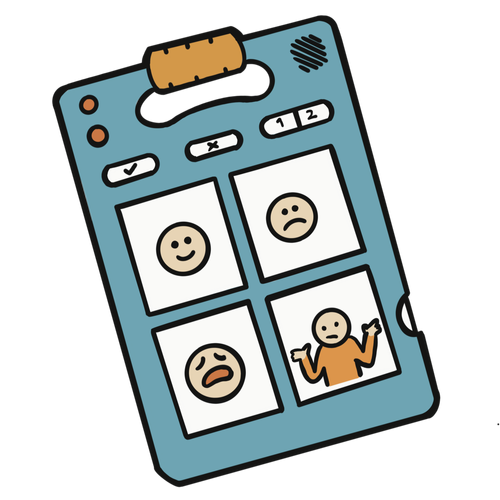AUGMENTATIVE AND ALTERNATIVE COMMUNICATION
Augmentative and Alternative Communication, also known as AAC, is any tool, method, or support used to enhance/support communication in those with speech disabilities. Broken down: The word “Augmentative” is used to describe supporting spoken language, and the word “Alternative” is used to describe using something in place of spoken language. The AAC definition encompasses gestures, writing, signing, symbol use, tablet-based devices, and more.
AAC is a gateway for so many individuals to build connections and break down communication barriers. Based on data from USSAAC there are more than 2 million children and adults in the United States that use AAC. Check out the resources from Communication FIRST about how we need better data on this population.
With so many Americans using and needing AAC, let’s break down the different types of AAC.
UNAIDED AAC OR NO TECH AAC
These are communication supports that are part of your body and can happen naturally without a tool. Some of the most common are gestures, eye gaze, and body position. These are likely the forms of AAC you are most familiar with and use on a day-to-day basis. Sign language also falls into this category, but it should be noted that sign language itself is a language and follows its own set of rules. So even though it is completed through the use of our body, it requires more learning than the other forms of unaided AAC.
LITE TECH AAC
Lite tech AAC is a form of aided AAC. This means we use a tool to support language. Lite tech AAC can include any tool that does not use technology. Some forms of lite tech AAC are paper and pencil, picture cards, core communication boards, alphabet, PODD books, and pictures.
MID-TECH AAC
Mid-tech AAC is also a form of aided AAC. This form starts to incorporate technology. These items are typically battery-powered and require individuals to record their voice for use. Some common examples include Go Talk, Quick Talker, and Big Mac buttons.
HIGH TECH AAC
High-tech AAC is the last form of aided AAC. It incorporates devices that need to be charged, have voice output capabilities, and incorporate language systems. High-tech AAC can include tablets and computers. In the medical world, you will hear them called Speech Generating Devices. These devices can be dedicated (meaning they are solely for the purpose of AAC) or non-dedicated (they can be used for a variety of functions). High-tech devices provide the most opportunity for independent communication.
Each form of AAC is essential to supporting those with speech disabilities and no one form can achieve all communication goals.
Lauren Greenlief









